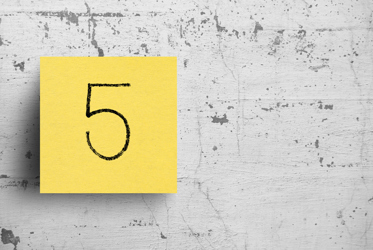5 Years From Now Retail Delivery Will Look Very Different
By Nicola Kinsella, Fluent Commerce

The post-pandemic squeeze is being felt throughout the commerce industry. Inflation on basic consumer goods like groceries coupled with record-setting labor shortages will make for an interesting holiday shopping and delivery season, to say the least.
Looking beyond the next few months, however, we can identify several habits, behaviors, and expectations that will continue to experience a major change in the coming years. Factors such as sustainability, social changes, technological innovation, and customer experience are all putting immense pressure on the modern retailer.
The Pursuit Of Sustainability
Take sustainability, for example, which is increasingly a factor in consumers’ decision making and attitudes toward issues such as delivery. While cost, reliability, flexibility, and speed remain front of mind for most consumers, the burden that delivering products from the other side of the world places on the environment is increasingly entering the consumer conversation.
While the “final mile” represents an important point of focus, retail influencers like Amazon are placing more resources behind campaigns that aim to publicize their use of eco-friendly delivery methods, such as electric trucks. Many other major retail brands have made some sort of commitment to sustainably, including more options to limit trips to an address, indicating sustainable return locations, and introducing drones and autonomous vehicles for delivery.
This contributes to better overall environmental performance, but it doesn’t mitigate the impact of long-distance logistics, which still require diesel-powered haulage fleets. In the pursuit of sustainability, consumers will increasingly show preference to retailers that are improving on this note and demonstrating their commitment to protecting the planet.
Persisting Social Pressures
Under the category of social pressures is another thing to consider: workforce wellbeing. Retailers can now routinely expect to be ousted for things like substandard working conditions, poor health and safety practices, or bad ethical corporate behavior. Last year, many companies faced intense scrutiny after claims surfaced of gag orders around social distancing and Covid outbreak protocols. Going forward, retailers must embed assurance processes within supply chains—from production through to delivery—to confidently assert their sustainable and ethical credentials.
Government regulations also have pushed the U.S. supply chain to implement sustainable measures like the Environmental Protection Agency’s (EPA) Clean Trucks Plan. Meeting these requirements will not only play a role in the overall customer experience and help brands to protect their image but also will help achieve something more fundamental, which is to protect the planet in an era of unstoppable consumerism.
Versatility In IT
Technology-led innovation is pushing automation from a niche function to a mainstream norm in retail delivery. Retailers are investing heavily in solutions that will lend more control and visibility to their supply chain infrastructure. For example, sophisticated cloud-based IT systems now enable orders and outbound fulfilment to be managed through a single dashboard, with the data from these streams collated and compared. Make no mistake, these types of advancements will only grow deeper as the years go by.
Data and analytics will play a greater role in how retailers monitor and manage the performance of different carriers in a given city or region. Technology innovation will help to improve forecasting, with historical data about sales volumes combined with real-time inputs such as weather or political conditions to give retailers better insight into decisions such as where to allocate stock and even whether to manufacture products in the first place.
The versatility of the as-a-service model, which allows retailers to deploy robots on a monthly subscription basis, is further accelerating the adoption of these transformational technologies. In common with many of these examples of change across the sector, the pandemic has created the conditions where emerging technologies have arrived much more quickly than anyone would have predicted at the beginning of 2020.
Improving The Customer Experience At Every Stage
The long-term goal of making these types of changes to operations is to truly improve the customer experience at every touchpoint. The desires of customers have changed over the last five years and will continue to change over the next five, presenting an opportunity for the retail and delivery sector to adapt to buyer preferences. In the U.S., the customer approval rating across all three major carriers—USPS, UPS, and FedEx—has fallen several points since 2017, according to data from The American Customer Satisfaction Index (ACSI).
With that knowledge as a backdrop, online retailers must find a way to maintain a positive customer experience even though the shipping process is out of their control. To achieve this, it’s important not to underestimate the power of visibility to the customer. Consumers want a clear understanding of their delivery options and product availability as they are making purchasing decisions. They want to have confidence that their order won’t be delayed or cancelled. Retailers that can successfully balance these key priorities are much better positioned to thrive as consumers become ever more sophisticated in their shopping decisions and brand loyalties.
The underlying, pre-pandemic challenges facing the retail sector were already bringing about a seismic shift in retail. Added to the mix in the last year or so has been the urgent need for rapid and agile adaptation to an unprecedented crisis. In doing so, many retailers have built valuable experience in the strategies and behaviors required to survive in the most challenging of circumstances. As a result, the innovation leaders have set the tone for an industry that will remain in flux for many years to come.
About The Author
Nicola Kinsella is VP of Global Marketing for Fluent Commerce.
